INFOGRAPHICS

Our infographics make complex concepts about emotional and behavioral health more accessible so that caregivers are better able to understand and engage with the therapeutic process. We aim to empower the community through user-friendly psycho-education, skill building, and practical application—because a deeper understanding of mental and behavioral health increases awareness, reduces stigma, and encourages early intervention.
© 2025 COPYRIGHT NOTICE: All original resources, content, and materials produced and displayed on this website are the intellectual property of Child Therapy Guide. These resources are protected by copyright laws and are intended for personal, non-commercial use. Unauthorized reproduction, distribution, or any other unauthorized use of the content without explicit permission from Child Therapy Guide is strictly prohibited. Users are encouraged to enjoy and utilize the resources responsibly, respecting the copyright and intellectual property rights associated with the content. For any inquiries or requests regarding the use of our materials, please contact us through our contact form.
-

FAQ About Child Therapy
Find answers to common questions about child therapy like: What is a child therapist? How do I find a pediatric psychotherapist near me? How do I afford therapy for my child? Would my child benefit from therapy? Will my child be labeled? How do I support therapeutic progress?
Empower parents and caregivers to make informed decisions about their child's mental health care.
-

Types of Child Therapy
Understanding what type of therapy is best for your child can be overwhelming. This comprehensible infographic breaks down 6 common modalities used by child therapists: play therapy, family therapy, dialectical behavioral therapy (DBT), acceptance and commitment therapy (ACT), parent-child interaction therapy (PCIT), and cognitive behavioral therapy (CBT). Once you understand what might be the best fit for your child, you can search for an appropriate licensed child therapist near you!
-
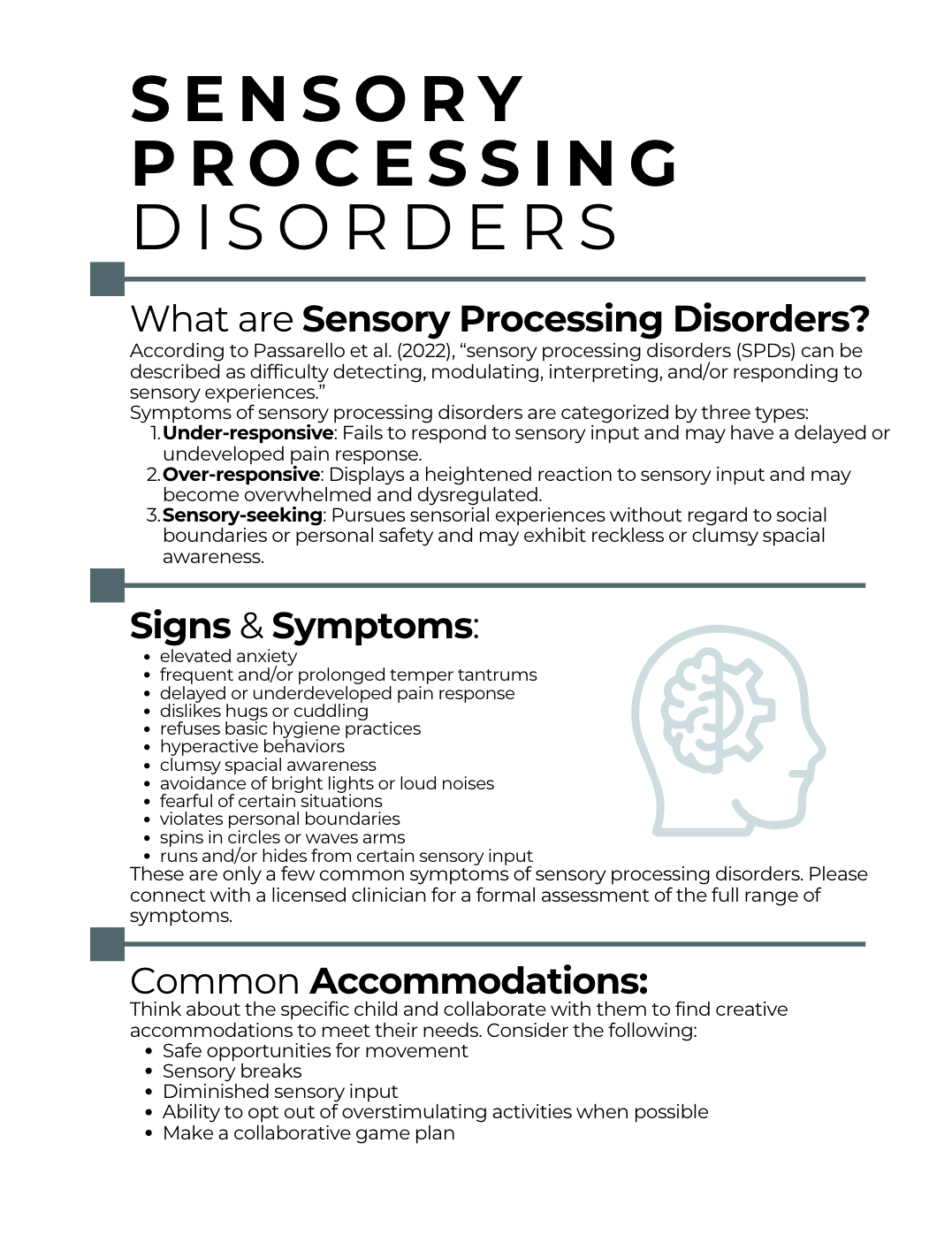
Sensory Processing Disorders
Children with sensory issues may struggle with textures, loud noises, crowds, food preferences, etc. These sensitivities are often seen in children with neurodevelopmental disorders such as autism spectrum disorder (ASD) or attention deficit hyperactivity disorder (ADHD), but they can also appear in otherwise typically developing children. Understanding and supporting a child’s unique sensory needs can help them feel more comfortable and engaged in their environment.
-

Attention-Deficit/Hyperactivity Disorder
Recognizing and embracing the unique strengths and challenges associated with ADHD is the first step in supporting a child’s development. Our simple infographic about symptoms, diagnosis, management, and advocacy of ADHD serves to cultivate open communication and collaboration between parents, educators, and clinicians to create an environment that celebrates and supports a child’s individuality.
-
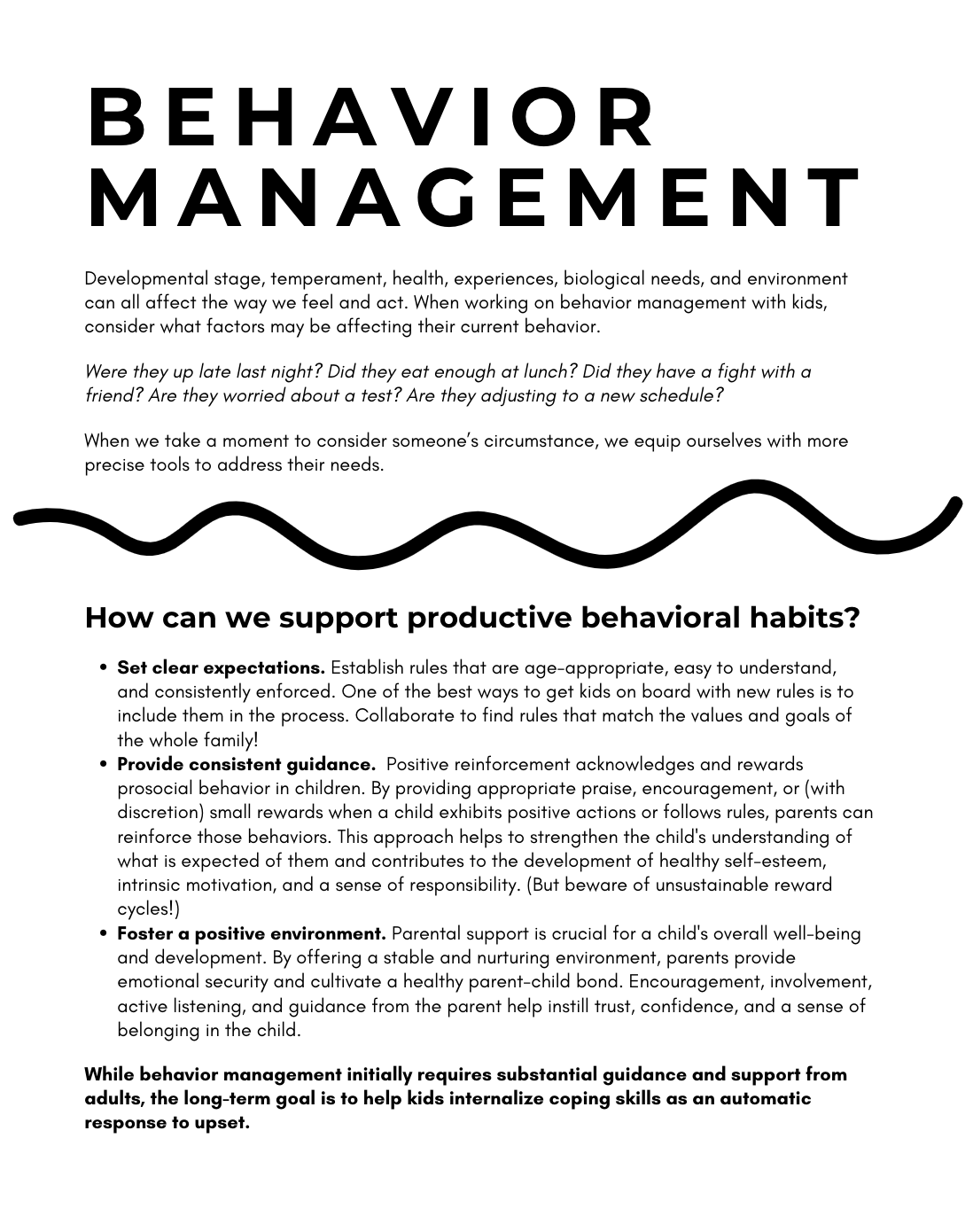
Behavior Management
Every kid is different and we have to tailor behavior management plans to meet individual needs and abilities. Read on for practical guidelines for a balanced approach to behavior management.
-
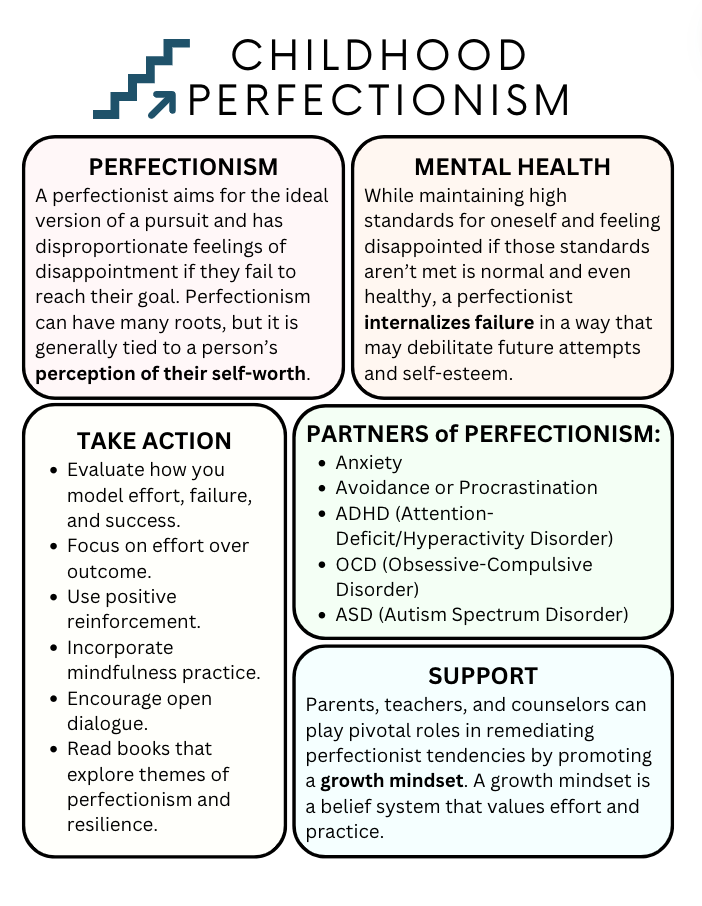
Childhood Perfectionism
A perfectionist aims for the ideal version of a pursuit and has disproportionate feelings of disappointment if they fail to reach their goal. Perfectionism can have many roots, but it is generally tied to a person’s perception of their self-worth.
-

Acupressure Tapping
Emotional Freedom Technique (EFT) tapping is a gentle, evidence-based method that combines acupressure with positive affirmations to alleviate stress, anxiety, and emotional challenges. Designed specifically for kids, our tapping infographic offers an actionable way kids can manage their feelings. Through simple tapping on specific points of the body, kids can learn to navigate their emotions, build resilience, and foster a sense of emotional well-being. Done with a parent, this technique can also strengthen parent-child bonding and trust.
-

Preschool Philosophies
There are lot’s of ways to “do” early childhood education. Learn about 5 common preschool philosophies: Montessori, Reggio Emilia, Waldorf, Play-Based, and Forest. The best predictor of social and academic achievement is confidence, so regardless of philosophy-specific approaches to academics, find a program where your kid will be comfortable and supported!
-

Play Therapy
Play therapy encourages imagination, self-expression, and exploration through specially selected toys and materials. It offers a transformative pathway for children to explore their emotions, navigate challenges, and find healing through the power of play.
-
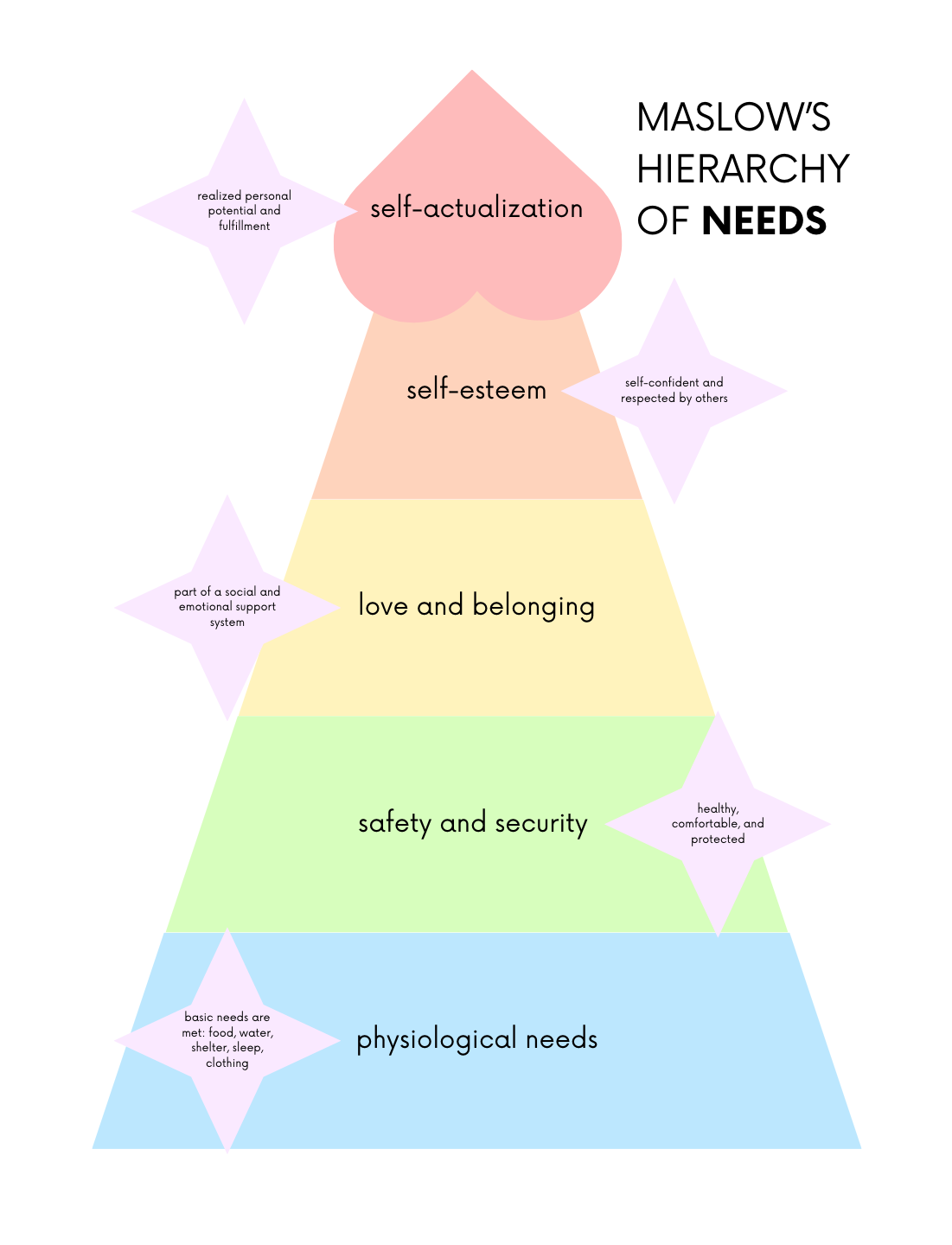
Hierarchy of Needs
Maslow's Hierarchy of Needs is a framework that identifies the building blocks necessary for a child's well-being. A child’s basic needs must be met before emotional, social, behavioral, or psychological issues can be addressed. Through this hierarchy, we see how a solid structure allows kids to flourish to their full potential.
-

Quiet Coping Skills
Quiet Coping Skills are subtle but effective ways to privately regulate emotions without attracting scrutiny from others. These techniques aim to interrupt overwhelming feelings by focusing on specific physical tasks and simple mantras. Coping skills don’t eliminate overwhelming feelings, but they do make them more manageable.
-

Resilience
Resilience is a dynamic skill set that empowers kids to adapt, learn, and thrive through life’s journey. By nurturing a growth mindset, parents, educators, clinicians, and caregivers can support self-efficacy, problem-solving skills, and optimism in kids so that they can grow and persevere through setbacks.
-
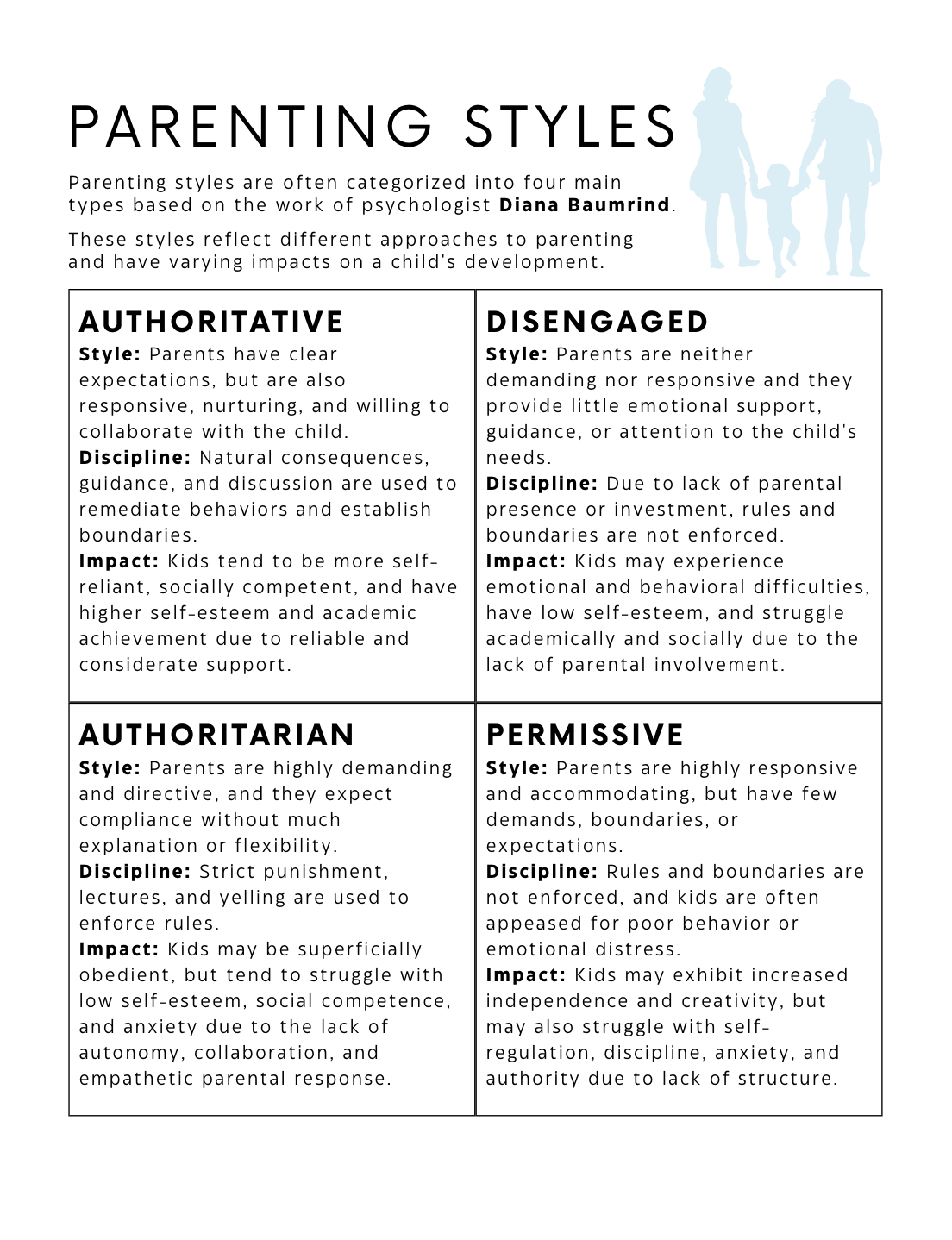
Parenting Styles
Parenting styles are often categorized into four main types based on the work of psychologist Diana Baumrind: authoritative, authoritarian, permissive, and disengaged. These styles reflect different approaches to parenting and have varying impacts on a child's development.
-

Breathing Techniques
Teaching kids mindful breathing exercises goes beyond just calming the mind, it equips them with the power of emotional regulation. These techniques enhance focus, reduce stress, and promote a sense of well-being. By incorporating simple and fun breathing exercises into their daily routine, children can build a foundation for better emotional health, improved concentration, and the ability to navigate life's challenges with a deep breath and a centered mind.
-

Reinforcement: Positive & Negative
Negative reinforcement is often mistaken for punishment and positive reinforcement is often mistaken for bribery, but if reinforcement is used correctly, neither of those are true. Rather, both positive and negative reinforcement are used to motivate kids and promote desired behaviors. Understanding how to use reinforcement to support healthy growth and development is key!
-

How to Talk to Teens
Effective communication during adolescence builds mutual trust, understanding, and respect. This kind of communication allows parents to better recognize cues and attend to the needs of their teenager. Learn more about Parent-Teen Communication and checkout our Conversation Starters for Teens.
